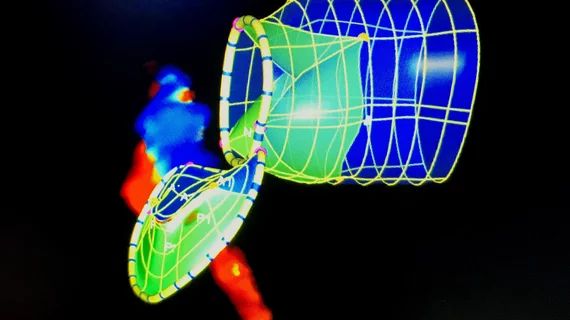The latest data on mitral valve infective endocarditis after TAVR
Infective endocarditis (IE) is a rare, but potentially fatal, complication of transcatheter aortic valve replacement (TAVR). And according to a new analysis published in the American Journal of Cardiology, one of the most common locations of post-TAVR IE is the patient’s mitral valve (MV).[1]
Hoping to learn more about this MV IE, the study’s authors explored data from nearly 600 patients diagnosed with IE after TAVR from June 2005 to November 2020. Data came from the Infectious Endocarditis after TAVI International Registry, which includes 59 facilities from 11 different countries.
Overall, MV IE was seen in 14.9% of patients. An additional 49.1% had IE in the transcatheter heart valve (THV) only. Patients with multiple IE locations (30.6%) or right-sided cardiac structure involvement (5.5%) were excluded from the team’s analysis.
Diving deeper into the registry data, researcher found that patients with MV IE were slightly older (79.7 years old) than patients with THV IE (78.5 years old). Patients with MV IE were also more likely to receive a new pacemaker after TAVR (22.4% vs. 10.6%) or experience significant paravalvular leak (PVL) (25.9% vs. 10.3%).
No differences were identified in the likelihood of mitral regurgitation, however.
The two factors most associated with a heightened risk of MV IE were the use of a self-expanding THV and the presence of significant PVL.
“Self-expanding valves are deployed from their ventricular side, exerting high radial forces within the left ventricular outflow tract (often deeper than balloon-expanding valves, particularly at the beginning of the TAVR experience),” wrote lead author Vassili Panagides, MD, of the Quebec Heart & Lung Institute in Canada, and colleagues. “Thus, friction between the THV stent frame with the anterior mitral leaflet may occur not only during the TAVR procedure but also over time if the valve is implanted too ventricular. This pathophysiological hypothesis is supported by the high rate of pacemaker permanent implantation after TAVR in our population with MV-IE, an indirect marker of implantation depth.”
In-hospital complications such as septic shock (14.5 vs. 27.7%) and persistent bacteriemia (20.3 vs. 31.8%) were rarer among MV IE patients than THR IE patients. Surgical management was also “substantially lower” (6 vs. 21.6%) in this patient population.
Finally, while in-hospital mortality was lower for MV IE patients (19.3%) than THV IE patients (30.7%), two-year mortality rates between the two patient groups were similar.
Panagides et al. did note that their work had certain limitations. The various facilities that participated could have had different protocols for the diagnosis and treatment of IE, for instance, and the study’s retrospective nature meant that some information was not readily available.
Ultimately, however, the team concluded that its findings helped contribute to the ongoing conversation surrounding the topic of post-TAVR IE.
“Future studies should further evaluate the mechanisms associated with MV-IE after TAVI and determine the most appropriate therapeutic approach in such patients,” the authors wrote.
Related TAVR content:
When infective endocarditis after TAVR is most likely to be fatal
VIDEO: TAVR durability outperforms surgical valves
TAVR vs. surgery, FFR-guided PCI and DCB safety: Day 3 at ACC.22
Same-day discharge after TAVR is feasible and safe, new Cleveland Clinic study confirms
How modified bioprosthetic heart valves could limit calcification, reduce need for TAVR
Reference:

